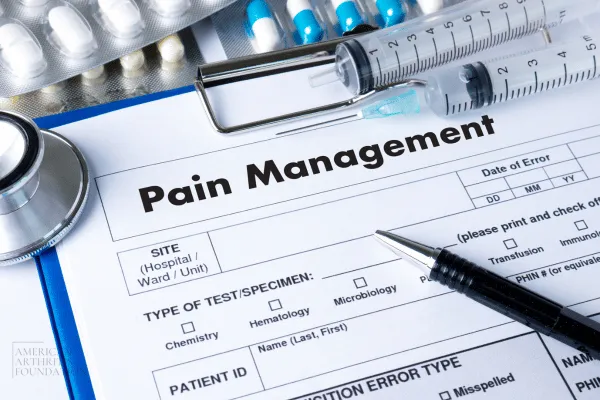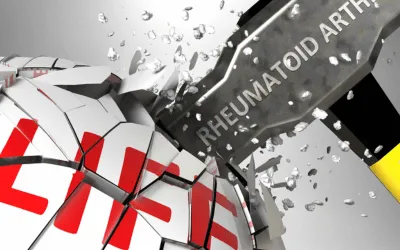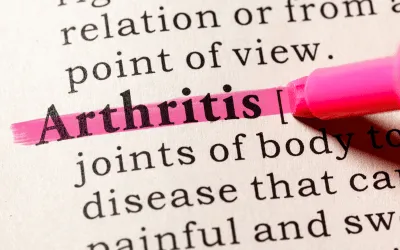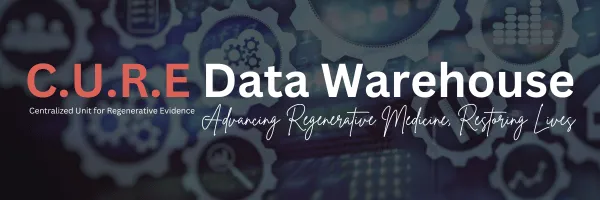About Arthritis
As the nation’s #1 cause of disability, arthritis affects nearly 60 million adults and 300,000 children. Over 100 types of arthritis and related conditions damage the joints and often other organs.
How can we assist you?
Helpful Tools for You

Beyond Pills: Revolutionary Pain Management Strategies That Actually Work
Discover evidence-based approaches to managing chronic pain without relying solely on medication
A New Era in Pain Management
If you're living with chronic pain, you're certainly not alone. Recent studies show that one in five adults experiences ongoing pain, and many of us are searching for alternatives to constant medication use. Whether you're concerned about side effects, worried about dependency, or simply want more control over your pain management, there's encouraging news from the medical community.
Researchers and healthcare providers are discovering that some of the most effective pain relief strategies don't come from a prescription bottle. These approaches, backed by solid scientific research, are changing how we think about pain management and offering new hope for those seeking relief.
Virtual Reality: Not Just for Entertainment Anymore
You may have heard about virtual reality in the context of video games or entertainment, but medical researchers have discovered something remarkable: VR technology can provide significant pain relief.
The Science Behind It
Recent clinical studies have shown impressive results. Patients using virtual reality therapy experienced an average reduction of 1.7 points on the standard 10-point pain scale. For those dealing with severe pain (rating their discomfort at 7 or higher), the improvement was even more substantial—a 3-point reduction on average.
This isn't simply distraction. Brain imaging studies reveal that VR actually interrupts the pain signals traveling from your body to your brain, providing genuine relief rather than just taking your mind off the discomfort.
How It Works in Practice
The FDA has now approved prescription VR programs for certain types of chronic pain, particularly lower back pain. These programs guide users through peaceful virtual environments—perhaps a quiet beach or serene forest—while incorporating relaxation techniques.
Many insurance plans are beginning to cover these treatments, recognizing their effectiveness and potential to reduce long-term healthcare costs. If you're interested in exploring this option, speak with your healthcare provider about whether VR therapy might be appropriate for your situation.
Getting Started: If you'd like to explore this approach, you can begin with simple VR applications on a smartphone or tablet. Many apps offer 10-15 minute sessions in calming environments that can help you determine if this method resonates with you.
Mindfulness and Meditation: Ancient Wisdom Meets Modern Medicine
Meditation and mindfulness practices have been used for centuries to manage pain and promote healing. What's new is our scientific understanding of exactly how these techniques work.
The Research Breakthrough
A significant study published in 2025 in the journal Biological Psychiatry used advanced brain imaging to prove that mindfulness meditation works through different pathways than placebo effects. This means the pain relief is genuine and measurable, not just psychological.
The research shows that regular mindfulness practice actually changes the structure of your brain, increasing areas responsible for learning and emotional regulation while reducing activity in regions that process pain.
A Simple Technique to Try Today
One of the most effective methods is called the "body scan." Here's how to practice it:
Find a comfortable position, either lying down or sitting in a supportive chair
Close your eyes and take three slow, deep breaths
Begin with your left foot, focusing your attention on your big toe for about 30 seconds
Notice any sensations without trying to change them—simply observe
Move systematically through each part of your body, spending time with each area
If you encounter pain, acknowledge it gently and breathe through it
Complete the scan by taking a moment to sense your body as a whole
The goal isn't to eliminate pain immediately, but to change your relationship with it. Many people find that this practice, done daily for just 10-15 minutes, significantly reduces both pain intensity and the distress that accompanies it.
Real Results
Studies show that 62.5% of chronic pain patients experience meaningful improvement with mindfulness-based interventions. Perhaps most encouraging, these benefits tend to last—research indicates that improvements can persist for 12-15 months after completing an 8-week mindfulness program.
Advanced Medical Devices: Precision Pain Relief
Medical technology has advanced significantly in recent years, offering new options for those with persistent pain. Neuromodulation devices use gentle electrical impulses to interrupt pain signals before they reach your brain.
What's Available Now
The newest generation of these devices, called "closed-loop systems," are particularly sophisticated. They monitor your body's responses continuously and adjust the treatment automatically throughout the day. This personalized approach provides more consistent relief than earlier technologies.
These treatments are particularly effective for:
Chronic back pain
Nerve-related pain
Pain that hasn't responded well to other treatments
While these devices require a medical procedure for implantation, many patients report significant reductions in both pain levels and medication use. The procedures are typically performed on an outpatient basis with minimal recovery time.
Important Note: These treatments require evaluation by a pain management specialist to determine if you're a good candidate. If traditional treatments haven't provided adequate relief, this might be worth discussing with your healthcare provider.
Exercise as Medicine: Moving Toward Better Health
Regular physical activity remains one of the most effective tools for managing chronic pain. The key is finding the right type and amount of movement for your specific condition and fitness level.
Tailored Exercise Approaches
For Arthritis and Joint Pain:
Water-based exercise: Swimming or water aerobics reduces stress on joints while maintaining movement
Gentle strength training: Light weights or resistance bands 2-3 times per week help support joints
Yoga or tai chi: These practices combine gentle movement with relaxation techniques
For Back Pain:
Core strengthening: Focus on exercises that support your spine without straining it
Walking programs: Start with 10-15 minutes daily and gradually increase as tolerated
Stretching routines: Regular flexibility work can prevent stiffness and reduce pain flares
Starting Small, Building Gradually
The most important principle is consistency rather than intensity. Here's a gentle approach:
Morning (5 minutes): Simple stretches while having your morning coffee Midday (5 minutes): A short walk, even if it's just around your home or yard Evening (5 minutes): Gentle movements to prevent stiffness before bed
Remember, any movement is better than none. Listen to your body and adjust activities based on how you're feeling each day.
Heat and Cold Therapy: Time-Tested Methods with Modern Applications
Heat and cold treatments remain valuable tools in pain management, but recent research has refined how we use them most effectively.
Updated Guidelines for Cold Therapy
Use cold treatments for:
Acute flare-ups or sudden increases in pain
The first 48 hours after an injury or strain
Areas with visible swelling or inflammation
Best practices: Apply for 15-20 minutes at a time, no longer. Always use a thin cloth between ice and skin to prevent frostbite.
Heat Therapy Benefits
Heat works best for:
Chronic muscle stiffness
Joint pain and arthritis
Tension-related discomfort
Effective application: Use gentle heat (think warm, not hot) for 20-30 minutes. Combining heat with gentle stretching often provides additional benefit.
Safety Considerations
Always ensure heating devices have automatic shut-off features. Never use heat on areas with poor sensation or circulation without medical approval. If you're taking medications that affect your ability to sense temperature, consult your healthcare provider before using hot or cold therapy.
Creating Your Personal Pain Management Plan
The most successful approach to pain management often combines several strategies tailored to your specific needs and preferences.
Building Your Foundation (Weeks 1-2)
Start with one or two approaches:
Begin a simple daily mindfulness practice (5-10 minutes)
Add gentle movement to your routine
Experiment with heat or cold therapy to see what feels helpful
Expanding Your Toolkit (Weeks 3-4)
Once you've established a basic routine:
Consider trying VR applications if available
Explore whether massage therapy might be beneficial
Keep a simple log of what techniques seem most helpful
Long-term Success (Months 2-3)
As you gain experience:
Fine-tune the timing and combination of techniques that work best
Discuss your progress with your healthcare provider
Consider joining a chronic pain support group or educational program
Addressing Common Concerns
"Will my doctor approve of these approaches?"
Many healthcare providers now actively recommend these evidence-based, non-medication strategies. In fact, medical schools are increasingly teaching about integrative pain management approaches. Don't hesitate to discuss these options during your next appointment.
"Do I need expensive equipment or extensive training?"
Most of these techniques require minimal equipment and can be learned with basic instruction. Many community centers, libraries, and healthcare facilities offer classes or resources to help you get started.
"How do I know if these approaches are really working?"
Keep a simple daily log noting your pain levels, mood, and activities. Many people are surprised to see gradual but meaningful improvements when they track their progress over time.
Taking the First Step
Managing chronic pain without relying solely on medication is not only possible—it's becoming the preferred approach for many healthcare providers and patients. The combination of traditional wisdom and modern research has given us powerful tools for pain relief.
This Week's Action Plan
Choose one strategy that appeals to you:
Try the 10-minute body scan meditation daily for one week
Add a 10-15 minute gentle walk to your daily routine
Experiment with heat or cold therapy for your most troublesome areas
Research VR pain management apps available for your smartphone or tablet
Moving Forward
Remember that finding the right combination of strategies takes time. Be patient with yourself as you explore what works best for your unique situation. Small, consistent efforts often lead to significant improvements over time.
The goal isn't to eliminate all pain immediately, but to develop a collection of effective tools that reduce your discomfort and improve your quality of life. With these evidence-based approaches, you can take a more active role in managing your pain and potentially reduce your dependence on medication.
A Message of Hope
Chronic pain can feel overwhelming, but you have more control than you might realize. These research-backed strategies offer genuine hope for better pain management and improved quality of life.
Your next step is simple: Choose one approach from this article and commit to trying it for one week. You may be surprised by what you discover about your body's capacity for healing and your own ability to influence your pain experience.
Remember to always consult with your healthcare provider before making significant changes to your pain management routine. They can help you integrate these approaches safely and effectively with any current treatments.

Effects of Arthritis

Cause of Disability
In the United States, 23% of all adults, or more than 54 million people, have arthritis. It is a leading cause of work disability, with annual costs for medical care and lost earnings of $303.5 billion.

Workforce Effects
Sixty percent of US adults with arthritis are of working age (18 to 64 years). Arthritis can limit the type of work they are able to do or keep them from working at all.

Global Impact
In fact, 8 million working-age adults report that their ability to work is limited because of their arthritis. For example, they may have a hard time climbing stairs or walking from a parking deck to their workplace.
Promoting Interventions That Reduce Arthritis Pain
American Arthritis Foundation recognizes several proven approaches to reduce arthritis symptoms:
Be active. Physical activity—such as walking, bicycling, and swimming—decreases arthritis pain and improves function, mood, and quality of life. Adults with arthritis should move more and sit less throughout the day. Getting at least 150 minutes of moderate-intensity physical activity each week is recommended.
Protect your joints. People can help prevent osteoarthritis by avoiding activities that are more likely to cause joint injuries.
Talk with a doctor. Recommendations from health care providers can motivate people to be physically active and join a self-management education program. Should your arthritis be interfering with your activities of daily living you may be a candidate to receive many new treatments, and learn how to reverse the arthritis condition.
Have a question?
We're Here to Help
By providing my phone number, I agree to receive text messages from the business.


